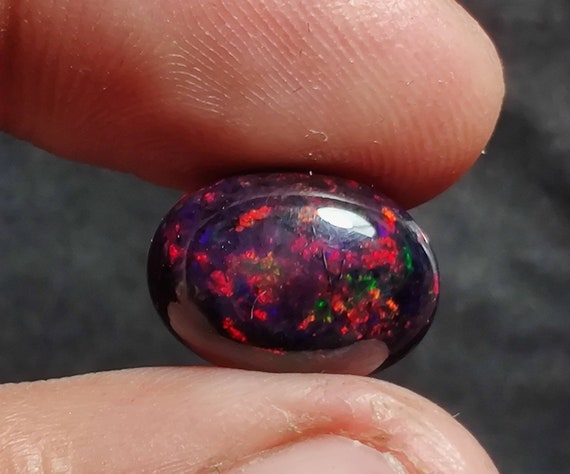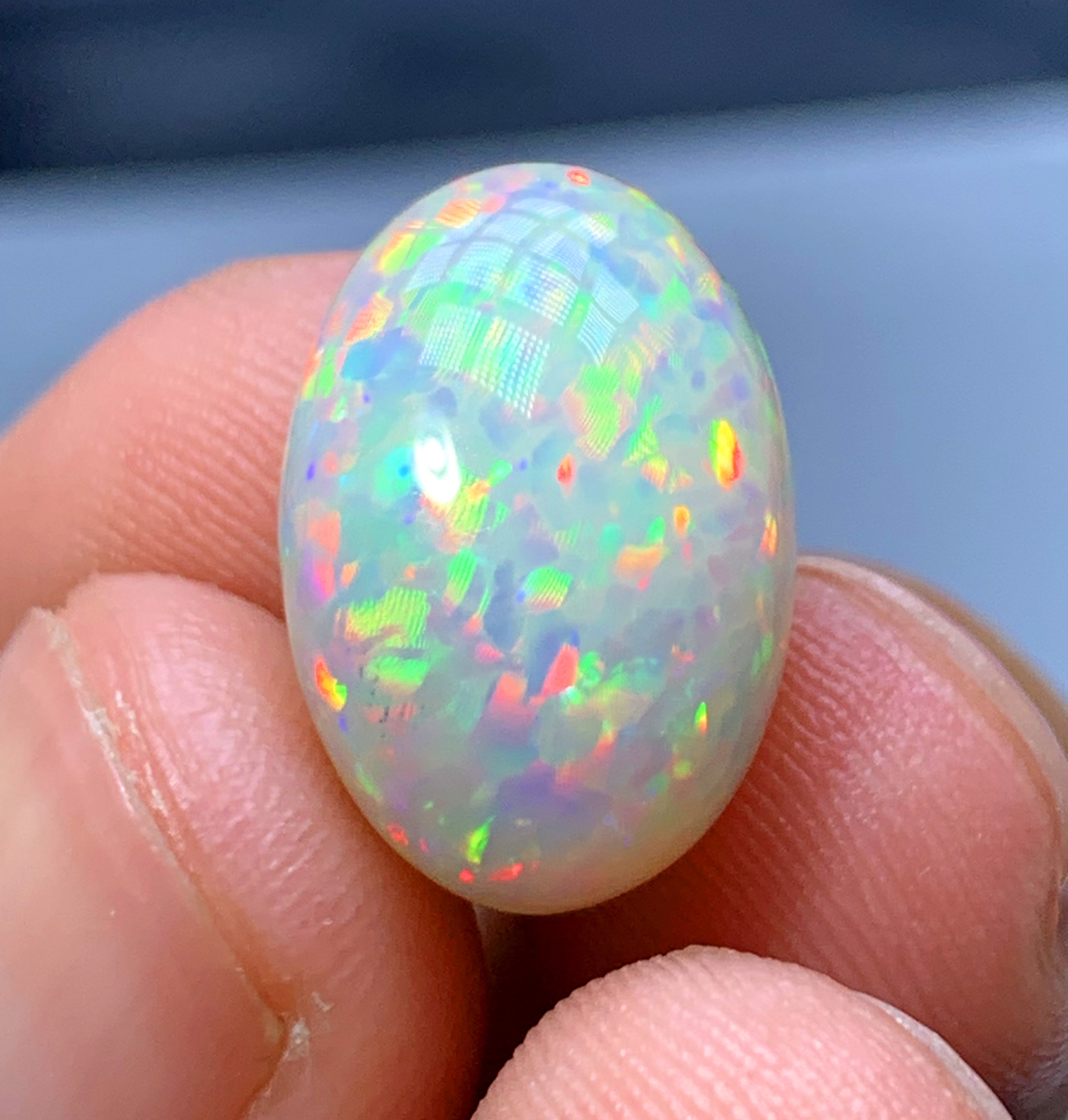Natural Ethiopian Opal Cabochon | Natural Opal Welo Opal Gemstone for Opal Jewelry Opal Necklace Multi Fire Opal Black outlet Opal Rainbow Opal
You are purchasing ONE Ethiopian Welo Opal cabochon pictured above chosen at random. These stones are 100% natural. Please see the photo that uses a dime as a size reference.
14.65 x 10.5 x 6.6mm
"Precious opal mined in Ethiopia began entering the gem and jewelry market in 1994. This opal originated from a discovery made in the Menz Gishe District in the northern part of the Shewa Province. Opal from this area occurs in a wide range of body colors. Much of the opal has a brown, red, or orange body color; however, yellow, white, and clear body colors are also found.
Shewa Province opal is found in stratified igneous rocks such as rhyolite, tuff, and ignimbrite. Although much of this opal has crazing problems, stable material enters the gem and jewelry market. These opals are often called “Shewa opals” or “Mezezo opals” after their locality of origin.
The most important opal discovery in Ethiopia to date was made in 2008 near the town of Wegel Tena in the Wollo Province in the northern part of the country. This opal can have vivid play-of-color flashing from a body color of clear, white, yellow, orange, or brown. It is more stable than the North Shewa opal. This material quickly became known in the trade as “welo opal,” but the names “wollo” and “wello” are also encountered.
Much of the welo opal is produced from outlet a single area of stratified volcanic rocks. The main vein is an opalized rhyolitic ignimbrite up to one meter thick that overlies a base of clay. The opal likely formed as silica-bearing waters accumulated on top of the impermeable clay. Silica gel precipitated in the pore spaces of the ignimbrite and was later transformed into opal.
The seam outcrops along steep valley walls, where short horizontal tunnels are excavated to mine the opal. Underground mining here is very dangerous work, as the ignimbrite is often fractured, friable and poorly lithified. The seam can be traced along the valley walls where it is being mined, but its full geographic extent is unknown because the opal-bearing stratum is covered by up to 350 meters of stratified volcanic deposits. However, the deposit may extend over several kilometers and could become a major source of gem-quality opal. [1]
A third deposit was found in 2013, again in the Wollo Province, but about 100 kilometers north of the Wegel Tena area. Much of the opal in this deposit has a translucent gray to black body color. [3] It occurs in a seam of mineralized ignimbrite. The seam is in an extensive sequence of stratified volcanic rocks. It is up to 60 centimeters thick and rests atop of an impermeable clay. This deposit is also poorly defined but the seam can be traced along the steep valley walls. Current mining is by horizontal tunnels dug into the seam's outcrop on steep hillsides." https://geology.com/gemstones/opal/ethiopian-opal.shtml
The stone you see here is the exact stone you will receive.
If you would like more photos or a video of this stone email us at affordablefineminerals [!at] gmail.com or message us on Instagram @affordablefineminerals



